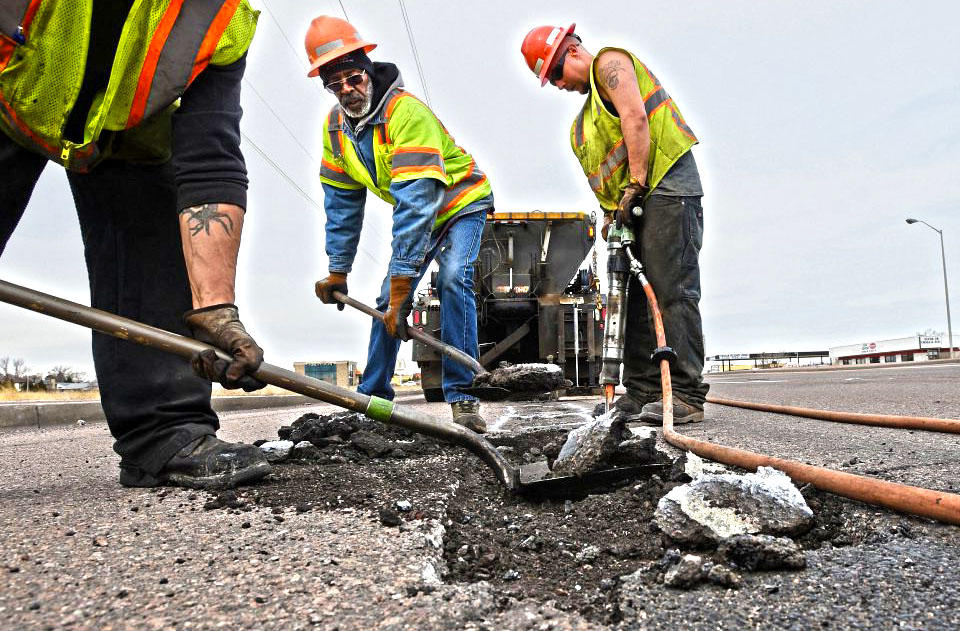LOS ANGELES, CA — It’s no secret that LA traffic takes a toll on everything from your pocketbook to your quality of life. But to add insult to injury, poorly maintained roads cost you more than you may realize, a new report found.
Drivers in the Los Angeles, Long Beach, Anaheim areas spend more than $900 a year in gas and wear and tear caused by bumpy roads, uneven pavement and potholes, a nonprofit transportation group reported Wednesday. According to the Washington D.C.-based nonprofit TRIP, nearly 60 percent of the freeways and roads used most by drivers in the Los Angeles-Long Beach-Anaheim region are in poor condition. The region ranks third in the nation behind only the San Francisco-Oakland area (71 percent of roads in poor condition) and San Jose (64 percent). The report looked at the top 20 large and mid-sized urban areas with the highest share of pavement in poor condition and the highest vehicle operating costs as a result of poorly maintained roads. California did not fare well.
Drivers contending with neglected roads spend more in repairs and gas while seeing their vehicles depreciate in value at higher rates, according to the experts. But it could be worse. Drivers in the Bay Area spend more than commuters anywhere contending with bad roads. They endure the highest increase at $1,049 a year followed by drivers in San Jose, who pay $983 a year. Compare that to drivers in Providence, Rhode Island, which came in 20th in the survey. They pay $724 in increased vehicle operating costs.
The findings largely replicates a report issued by TRIP Aug. 15 that also found drivers paid on average about $300 annually for vehicle repairs from traffic crashes in which roadway features were likely a contributing factor.
TRIP also stated that an investment in transportation strengthens the economy, supporting the equivalent of 4 million full-time jobs across all sectors of the nation’s economy. “Approximately 63 million full-time jobs in the U.S. in key industries like tourism, retail sales, agriculture and manufacturing are dependent on the quality, safety and reliability of America’s transportation infrastructure network,” the report said.
“Highways are vitally important to continued economic development in the United States,” it added. “As the economy expands, creating more jobs and increasing consumer confidence, the demand for consumer and business products grows. In turn, manufacturers ship greater quantities of goods to market to meet this demand, a process that adds to truck traffic on the nation’s highways and major arterial roads.”
The group said a significant boost in funding is needed to improve roadway conditions. It cited a U.S. Department of Transportation semi-annual report that found the nation’s current $41 billion annual investment in maintaining roads and highways should be increased by 33 percent to $61 billion dollars a year.
TRIP issued the following recommendations for increasing the smoothness of urban roads in order to reduce additional vehicle operating costs:
- Implement and adequately fund a pavement preservation program that postpones the need for significant rehabilitation by performing initial maintenance and preservation on road surfaces while they are still in good condition.
- Consider using pavement materials and designs that will provide a longer-lasting surface when critical routes are constructed or reconstructed.
- Resurface roads in a timely fashion using pavement material that is designed to be the most durable given local climate and the level and mix of traffic on the road.
- Maintain an aggressive pothole-patching program that uses the best material available.
- Invest adequately to insure that 75 percent of local road surfaces are in good condition.
The full report can be found at www.tripnet.org.
TRIP is sponsored by insurance companies, equipment manufacturers, distributors and suppliers; businesses involved in highway and transit engineering and construction; labor unions; and organizations concerned with efficient and safe surface transportation.
